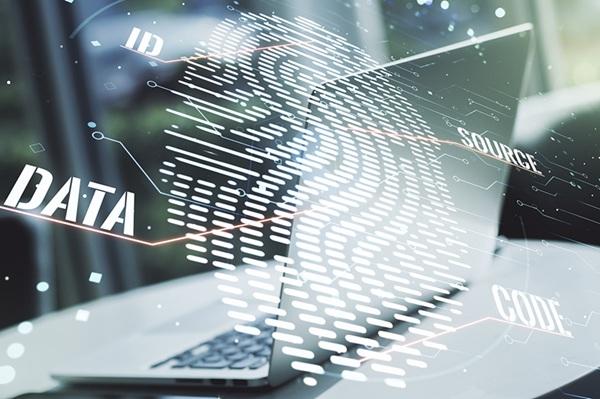The Digital Ghost Hunt: How Degaussing Hard Drives Became the Last Line of Defence Against Corporate Espionage

Degaussing hard drive technology emerged from the shadowy world of intelligence operations as the nuclear option for data destruction, where the complete obliteration of sensitive information requires magnetic fields powerful enough to scramble the very atoms that store digital secrets. In corporate boardrooms across the globe, executives are discovering that their greatest vulnerabilities may not lie in sophisticated cyber attacks or insider threats, but in the mundane act of retiring old computer equipment—a process that, if handled improperly, can expose decades of confidential information to anyone with the right tools and motivation.
The Invisible War for Digital Secrets
The modern corporate landscape resembles a vast battlefield where information serves as both weapon and prize, with discarded hard drives functioning as unexploded ordnance scattered across the terrain. Intelligence professionals have long understood what business leaders are only beginning to grasp: that deleted files never truly disappear, lurking instead in the microscopic magnetic domains of storage devices like ghosts waiting to be resurrected by determined adversaries.
The persistence of data creates opportunities that would have been unimaginable to previous generations of spies and corporate raiders. A single discarded laptop can contain:
-
Years of strategic planning documents revealing competitive advantages
-
Customer databases worth millions on the black market
-
Executive communications exposing internal conflicts and decision-making processes
-
Financial records detailing profit margins and cost structures
-
Research and development files containing proprietary innovations
-
Employee records including personal information and security clearances
Each retired device represents a potential intelligence goldmine, accessible to anyone willing to invest in data recovery technology that has become increasingly sophisticated and affordable.
The Science of Digital Resurrection
Understanding the threat requires examining digital information persistence at the molecular level. When users delete files, the information appears to vanish whilst remaining physically intact within storage medium.
Recovery operates through:
-
Magnetic force microscopy detecting residual magnetic patterns
-
Specialised software reconstructing files from scattered data fragments
-
Hardware techniques bypassing damaged controller chips
-
Clean room procedures repairing physically damaged storage components
The Magnetic Solution
Degaussing achieves “information death”—complete and irreversible data destruction. The process employs powerful electromagnetic fields to randomise magnetic domains storing information, scrambling atomic-level structures that make recovery possible.
Professional equipment generates magnetic fields measuring thousands of gauss through precise calibration of field intensity, exposure duration, and magnetic orientation ensuring complete data obliteration.
Singapore’s Strategic Approach to Data Security
Singapore has developed one of the world’s most comprehensive frameworks for secure data destruction, treating degaussing as a critical component of national cybersecurity strategy. The city-state’s approach reflects an understanding that information security extends beyond active network defences to encompass the entire lifecycle of sensitive data.
A senior government cybersecurity adviser recently explained the national perspective: “Singapore’s degaussing hard drive protocols represent our recognition that data sovereignty requires controlling information from creation through final destruction—we treat every discarded storage device as a potential national security asset that must be neutralised through systematic magnetic obliteration.”
This comprehensive approach has made Singapore a model for other nations seeking to address the challenges of secure data disposal in an increasingly connected world.
The Economics of Digital Destruction
Inadequate data destruction has transformed degaussing from security precaution into business imperative. Corporate data breaches generate costs measured in millions, encompassing direct expenses, regulatory fines, and long-term reputational damage.
The modest investment in professional degaussing services pales compared to potential data exposure consequences. Criminal organisations have recognised this reality, developing sophisticated supply chains for acquiring corporate electronic waste.
The Underground Economy of Data
Investigation into the global trade in discarded electronics reveals a thriving underground economy where supposedly destroyed hard drives change hands like commodities. Professional data recovery operations, some legitimate and others decidedly not, have discovered that corporate electronic waste represents one of the richest sources of valuable information available in the modern economy.
The network operates through multiple channels:
-
Electronics recycling centres that serve as collection points for discarded devices
-
International shipping routes that move electronic waste to processing facilities
-
Specialised laboratories equipped with advanced data recovery technology
-
Black market networks that broker access to recovered information
-
Criminal organisations that monetise stolen data through various schemes
Each link in this chain represents a potential vulnerability for organisations that fail to implement proper degaussing protocols.
The Technical Arms Race
Storage technology evolution creates ongoing arms race between data protection and recovery capabilities. As devices become more sophisticated with encryption and distributed storage architectures, destruction techniques must correspondingly advance.
Modern degaussing equipment addresses challenges including solid-state drives distributing data across multiple memory chips, encrypted storage complicating recovery methods, and hybrid systems combining multiple technologies.
The Future of Digital Warfare
As digital information becomes central to economic and national security, reliable destruction techniques intensify in importance. Sophisticated cyber defences mean nothing if sensitive information can be recovered from discarded storage devices.
Future threats may require quantum-level techniques employing principles beyond traditional electromagnetic approaches. The ultimate irony: organisations investing millions in digital asset protection often overlook ensuring complete destruction, making degaussing hard drive technology perhaps the most critical component of comprehensive cybersecurity strategy.



